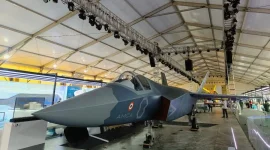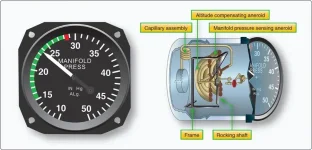- Views: 3K
- Replies: 17
In a significant step towards achieving self-sufficiency in critical aerospace technologies, the Defence Metallurgical Research Laboratory (DMRL), a key laboratory under India’s Defence Research and Development Organisation (DRDO), is seeking collaboration with Indian private sector companies.
The initiative, announced via an Expression of Interest (EoI) on April 19, 2025, invites development contracts for the precision machining of advanced aero-engine turbine blades and vanes.
The contract specifically focuses on High-Pressure Turbine (HPT) blades and vanes, which will be machined from single-crystal nickel superalloy castings supplied by the customer. This move is aimed at bolstering India's capabilities in producing crucial components for aero-engines domestically.
DMRL has been a pioneer in the development of sophisticated materials for India's defence needs, especially within the aerospace sector.
The laboratory has already successfully developed the complex technology for producing state-of-the-art Directionally Solidified (DS) and Single Crystal (SX) blades and vanes.
These are manufactured through a specialised vacuum investment casting process, which is vital for creating components for modern aero gas turbine engines that require high levels of efficiency, significant thrust, and reduced fuel consumption.
Made from advanced nickel-based superalloys, these parts are engineered to endure the extreme temperatures and stresses encountered in military aircraft and helicopter engines.
The Expression of Interest represents a strategic effort to involve Indian industrial partners in the highly precise task of machining these essential components.
Single-crystal (SX) technology, a capability mastered by only a handful of nations globally including the USA, UK, France, and Russia, offers superior material properties.
By eliminating grain boundaries within the metal structure, SX components exhibit enhanced resistance to creep (deformation at high temperatures) and fatigue, critical for engine longevity and performance.
DMRL has already demonstrated its proficiency in this area, having supplied 60 single-crystal HPT blades to Hindustan Aeronautics Limited (HAL) in 2021 for an indigenous helicopter engine development program. There are further plans to deliver a total of 300 such blades in five sets.
The current EoI calls for competent industrial entities to undertake the intricate machining of HPT blades and vanes using the pre-supplied single-crystal nickel superalloy castings.
This manufacturing stage demands sophisticated techniques to achieve the complex aerodynamic shapes and meet the exceptionally strict dimensional tolerances vital for optimal aero-engine performance.
These blades and vanes form the heart of gas turbine engines, including those intended for critical platforms like the Kaveri engine (designed for the Light Combat Aircraft Tejas), the Jet Fuel Starter (JFS) for the Tejas, and the Adour engine that powers the Jaguar combat aircraft.
DMRL has previously transferred related casting technologies to HAL's Koraput division, where the production of JFS castings has already commenced.
This machining contract is a vital link in the aero-engine production chain. It ensures that the initially cast components are meticulously finished to meet exact design specifications, which are crucial for ensuring airworthiness and operational reliability of the engines.
This initiative strongly aligns with the Indian government’s “Make in India” policy, which seeks to lessen the country's reliance on foreign suppliers for high-technology aero-engine components and concurrently cultivate indigenous industrial expertise and capabilities.
India's aerospace industry has historically depended on imported engines and their associated parts, a situation that presents both strategic vulnerabilities and economic burdens.
The indigenous Kaveri engine programme, for instance, which was conceived to power the LCA Tejas, has encountered developmental challenges, partly linked to mastering high-performance material technologies such as single-crystal blades.
By successfully developing these critical materials and now seeking private sector participation for their machining, DRDO, through DMRL, is not only advancing indigenous technological prowess but also creating valuable opportunities for Indian industries to make substantial contributions to national defence and security.



